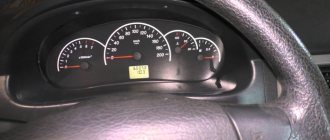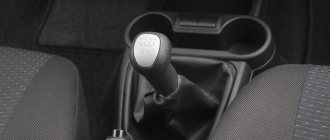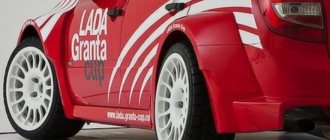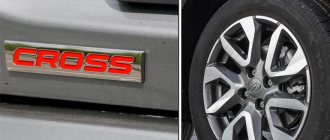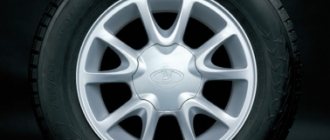Dips in the engine when squeezing gas - why they occur and how to eliminate them
A car engine is a very complex mechanism. You begin to understand this especially clearly in moments of failure. There are problems that baffle even specialists. One of these problems is failures when pressing the gas. We studied this problem in detail, determined its nature, established the causes and found solutions. If this problem bothers your car, then you are on the right track with us.
What are failures?
If, when you sharply press the gas pedal, a failure occurs in the engine, you need to urgently look for the cause of this situation and eliminate it without delay. The problem is serious and even dangerous for the driver, especially when overtaking.
In general, failure of the engine is manifested in the form of a lack of response on its part to the depressed gas pedal. Thus, when trying to accelerate, the engine does not gain the required speed. Engine failures can have different manifestations:
- Brief dips that last only a few seconds. But, believe me, this time is enough to create a dangerous situation on the road.
- Prolonged engine silence can last up to 10 seconds. Often even the car stalls.
- Jerks in which the car jerks. Such failures last 1-2 seconds.
- Numerous jerks that follow each other. In such a situation, the motor changes its operating speed despite the constant position of the accelerator.
- A series of prolonged failures causes serious jerking of the car.
Regardless of how the car behaves, the problem must be fixed immediately. Such a malfunction can cause an accident, especially in icy conditions or when performing a maneuver. Difficulties during acceleration of injection and carburetor engines occur for various reasons. We will talk about this further.
Why are the revs dropping?
There are many reasons that can provoke failure when pressing the gas pedal. This circumstance significantly complicates diagnosis.
- Spark plugs and high voltage wires are the first thing you need to pay attention to when this problem occurs. The problem with spark plugs is carbon deposits that occur during vehicle operation. Carbon deposits cause incorrect operation of the spark plugs, which in turn leads to engine failure. Wires do not often become the cause of such a malfunction, but still their condition is also checked without fail. During the diagnostic process, a fracture or poor contact may be detected.
Carbon deposits on spark plugs
- Injectors worry owners of cars with high mileage. These elements are prone to blockages, which cause interruptions in their operation. The consequence of this state of affairs is a lean fuel mixture.
- The throttle valve can also become clogged and stick. A coating forms on the surface of the valve, which does not allow the throttle to perform its functions normally. This prevents the engine from gaining momentum.
- Incorrectly adjusted ignition is a rare cause, but it does occur. This malfunction can be eliminated in a few minutes by properly adjusting the mechanism. But only an experienced specialist can do this.
- Errors in the ECU that can accumulate during operation of the machine. When a lot of them accumulate, the engine's response to the accelerator may be delayed.
- Blockages in the air filter lead to suffocation of the engine, which experiences “oxygen starvation”.
- Incorrect operation of the fuel pump can be associated with various problems (poor contacts, blockages in the filter, power failure, breakdown of working units).
Scratched glass
Another problem for Vesta, which appeared immediately after the start of sales. Vertical scratches appeared on the side windows in just a few lifting and lowering cycles. It was all blamed on the door seals being too rigid and too close together.
Dealers cut them and changed them, but, according to our observations, it helped little. Judging by the number of abrasions and small chips on the windshield of the editorial car, Vesta uses too “soft” glass. But here the plant did not make any changes: they continue to install the same Sisecam on the cars.
How to get rid of problems caused by a drop in speed
A failure in the engine during significant acceleration can occur for various reasons - this has already been dealt with. These reasons vary depending on what type of engine is installed in the car: carburetor or injection. Accordingly, methods for troubleshooting also vary. We have to deal with this now.
Checking the carburetor system
Initially, the operation of the fuel system is checked to see how smoothly and correctly it works. Every working unit and detail matters. Air leaks are checked, fuel lines are examined and the fuel pump is diagnosed. All blockages and deposits are removed.
Fuel pump
If the diagnostics do not reveal any problems, then the carburetor may cause a failure in the engine when the gas pedal is pressed. This part is responsible for supplying fuel. During normal operation of the carburetor, fuel is supplied without interruption, constantly and evenly.
To identify and eliminate the cause of the problem, you must proceed as follows:
- We exclude air leaks, which may occur due to a loose fastening on the exhaust manifold.
- We study the condition of the mesh-type filter, which is located in the area where the pipe from the fuel pump connects.
- We dismantle the EPH valve and the sealing ring and examine their condition. If the EPHH is working properly, then when you connect one side of the wire to the terminal, and the opposite end to the positive terminal of the battery, a clicking sound will be heard.
- Check the liquid level in the float chamber. To do this, start the engine, leave it to run for a while, remove the top carburetor cover and filter housing. Now let's evaluate the fuel level. In normal condition, it should be in the middle of the inclined wall.
- The dosing system may become clogged and this is a common problem. To eliminate it, you will need to remove the top part of the dispenser and the jets. We look for blockages and remove them using wooden parts. Emulsion tubes, which are often forgotten, also need inspection and maintenance.
- Special products are used to clean the carburetor channels.
Drop in speed on injection models
In the case of injection cars, when failures occur in the engine, the fuel supply system is first checked to see how well this system works. What you need to pay priority attention to:
- Is there a blockage on the fine filter?
- The fuel pump operates stably.
- Clean filter mesh on the intake.
- Is the fuel rail pressure normal? The norm for this indicator starts from 2.8 and reaches 3.2 Bar.
- The sensors that regulate the formation and supply of the fuel mixture are functioning normally.
- How many errors have accumulated in the ECU?
- The throttle valve has collected debris.
- Injectors can cause failures in the operation of an injection engine when you press the gas pedal. We definitely check their functionality.
Poor hood seal
For the first year and a half, Vestas were fitted with a hood seal of two halves with a gap in the center near the lock. It was there that dirt broke through under the hood in huge quantities. Over 15–20 thousand km, the engine compartment becomes suitable for planting vegetables.
Later the plant switched to solid rubber. The trouble is that in the central part it is still not glued. The rate of contamination of the engine compartment has decreased, but has not become zero. Lovers of cleanliness still need to do “collective farm” work in every nook and cranny of the car. And not only them: Vesta is so dirty in this part that even checking the oil level is unpleasant.
- A wide range of auto chemicals and many useful car accessories can be found on the pages of the Za Rulem store.
Lada Vesta failures during acceleration
I also encountered a problem with jerking. The situation is this: many people complain from the very beginning that the car does not move and there are jerks when changing gears. So, I didn’t have this from the very beginning, acceleration from the bottom, dynamics, gear shifting - everything is excellent. I really didn’t understand what people were talking about. Now the mileage is 8500 and I recently found out what it is and it’s really annoying. How it happened - I always noticed that when gasoline approaches the red zone, the car drives worse. I had to drive about 15-20 km on the light bulb, then I filled the tank full and the problem started. It could be a coincidence, of course. I've already driven off the gasoline, that's not the problem. The cravings also became worse. You press the gas, it stalls for 1-2 seconds, then it jerks. The question is: has anyone tried to combat this by replacing spark plugs and coils? I had a similar problem on my viburnum when one of the coils burned out. I’m not going to the officials yet, they’ll still say it’s normal. The essence of the question is that the car can drive normally if it was driving before, but many suffer from these jerks. Engine 1.8 manual, April release square ramp.
Hello! Start with spark plugs and rubber hoses of the V.C. gas system. and do a throttle adaptation! It should help.
On naturally aspirated gasoline engines, gear shifting starts at 2500 engine rpm if you drive 1500-2000 in 2,3, etc. the engine is under tension and jerks, diesel is different and has more torque
Hi all! Yesterday I went to the dealer about the car jerking and poor acceleration dynamics, maybe I think the ramp will be replaced under warranty, especially since my car is subject to a ramp replacement. And after diagnosing the car, it was politely sent to hell...! They said: there are no errors, crappy gas, look for a good gas station and charged 500₽ for diagnostics. This is fine?
Ilya, maybe they said something about gasoline, they weren’t lying. Somehow I thought about it, thought about it, and came to the conclusion that, yes, gasoline and its quality are important. Somehow it took about three months to fill up with gasoline at Bashneft. It was great for two months, and then, no matter how it doesn’t go, it jerks. It was a mess for a month. The impression is that a lot of air is being supplied to the system. There’s a guy at work, also a designer, he just has a Vesta station wagon, he refueled there too, that’s what happened too. Then I saw that he lives near a gas station, they closed it there and let’s clean all the tanks, they rarely did this. The guy switched to another gas station and was glad. I burned almost all the fuel, refueled at another gas station, 92, as if the saints had flown over the house. Then I filled it with 95 and the car completely flew off.
I went to one with the same problem. At first they said that I simply did not know how to use the clutch. Then they claimed that it was impossible to rev above 3000 rpm. Then they said it was a matter of gasoline. After I countered all their arguments, the warranty engineer remembered that there were no errors. Well, I got an answer to that)). Errors only occur when there is a misfire, and this is only one of many symptoms and its presence is not necessary. After that, they agreed to send an application to the plant. On September 10, they said that the plant had approved the replacement and still nothing.
Greetings! 1.8 manual transmission. After 1,500 km, a humming noise appeared when moving backwards (neutral or gear does not matter). Moreover, the longer it stood, the stronger the hum; it disappeared after 2-4 seconds and did not always appear. I'll try to take a video today if possible. I have not found a similar phenomenon in anyone. In a week I’ll go to TO-0, and I’ll present it there!
Hello everyone. Finally, I solved the problem with twitching and failures of 1.2 and it happened on the third! I have a cross 1.8 manual transmission with a mileage of 25,000 thousand. For a long time I was looking for how to solve this problem, I went to all the diagnostics in my city, the dealer in my city said this is the norm, so I gave up on it, so So I started looking in electronics first, everything was fine! In mechanical components, everything is fine! I checked the ECU probably 6 times, went to all different firmware specialists, went to no avail, spark plugs, throttle valve adaptation, tried everything and all to no avail! Well, I think I'm fucked up, I decided to sell the cross. I took my car for maintenance and after a while the manager calls me and says, are you comfortable driving the car? I say "No! I’ll sell it all twitching and spitting, and here he is, we can solve this problem by flashing the ECU, I tell him that I’ve done the flashing 6 times and all the different specialists are of no use! And he tells me we don’t know how to flash, and we order a program from Moscow, but I think let’s try. I’m on my way to pick up the car, at the service center they tell me to take it for a ride, and I was just like, oh, I just drove it all day and all night! The car is completely different! The dips, all sorts of spitting and the like disappeared, the car was just fire and traction appeared! So why am I all this, it’s all about the firmware, get the firmware done by trusted specialists! And by the way, my ramp is ROUND! And my catalyst has been removed. And now I'm happy with the car! All the best




